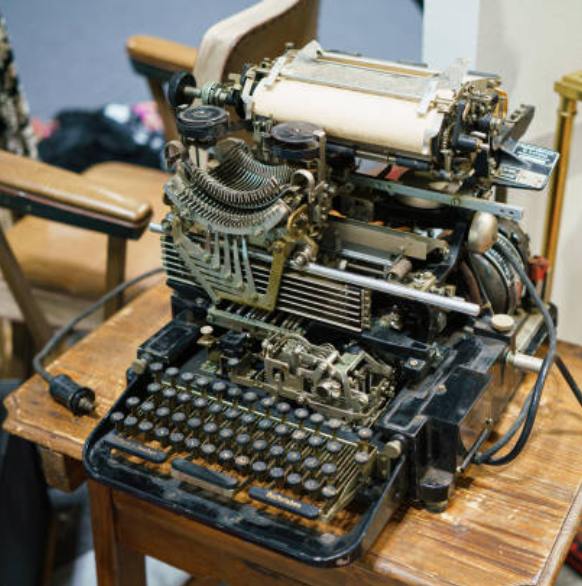It was a bit of a relief yesterday to hand back to their owners three typewriters I'd been working on for the past few weeks: an Underwood three-bank, an 1896 Remington 6 and a Facit TP1. On the same morning, however, I was called back to the Museum of Australian Democracy (Old Parliament House), where the "Yours Faithfully" exhibition is due to re-open next month. The already much-in-demand exhibition was well promoted with an Olivetti Valentine illuminated on to the front of the MoAD building during the "Enlightened" festival earlier this month. But a scheduled immediate post-Covid reopening of "Yours Faithfully" was pushed back by some weeks because braindead anti-vax demonstrators set fire to the entrance of this gorgeous 95-year-old building, causing considerable damage inside and out. Happily, none of the portable typewriters being used in the "Yours Faithfully" exhibition appear to have suffered any harm from the fire. And that is just as well, because the popularity of "Yours Faithfully" has resulted in a decision to keep it going another year. Based on the typewriter repair work I have had to do at MoAD in the past, I was expecting to find some mechanical damage when I returned there yesterday morning, and sure enough there was plenty. Most alarming were the carriage levers snapped off a Hermes Baby (above) and a Silver-Seiko (below). Also, two Olympias had key linkages broken. As for the broken carriage levers, this an all-too-common occurence from the mis-use of the typewriters at "Yours Faithfully" - last year I had to deal with the same problem on another Facit TP1, as well as on the same Hermes Baby and on other machines. In each case, the damage had obviously been caused by undue force - and considerable force at that - and I try to convince myself it's not deliberate vandalism. Anyway, in the coming days I'll see what can be done for the four portables now crowding up the briefly cleared work bench in my Typewriter Workshop. Fingers crossed!


















.jpg)






































